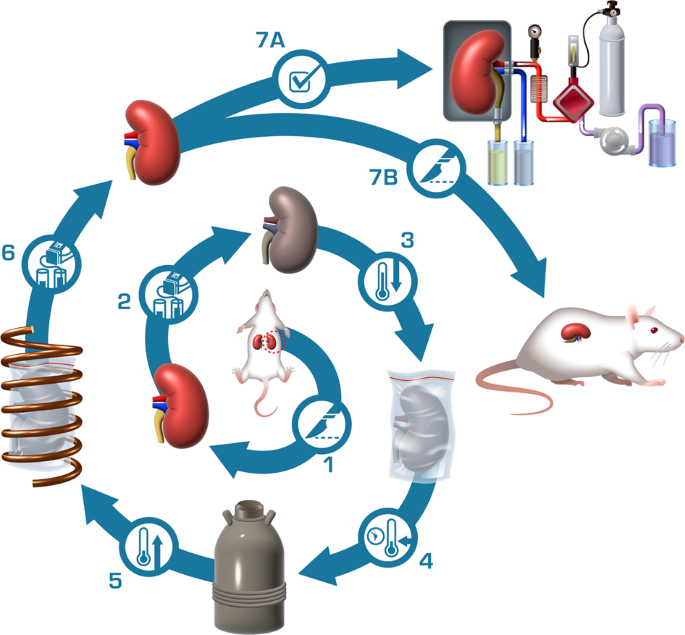2023-06-22 ミネソタ大学
◆彼らはナノ加温プロセスを開発し、鉄酸化物ナノ粒子を使用して臓器を内部から均一に温めることに成功しました。この研究は腎臓に焦点を当てていますが、将来的には他の臓器にも応用され、臓器や組織の長期保存が可能になるでしょう。
<関連情報>
- https://cse.umn.edu/college/news/researchers-perform-first-successful-transplant-functional-cryopreserved-rat-kidney
- https://www.nature.com/articles/s41467-023-38824-8
ガラス固化とナノ加温により、ラットモデルで臓器の長期冷凍保存と生命維持のための腎臓移植が可能になった Vitrification and nanowarming enable long-term organ cryopreservation and life-sustaining kidney transplantation in a rat model
Zonghu Han,Joseph Sushil Rao,Lakshya Gangwar,Bat-Erdene Namsrai,Jacqueline L. Pasek-Allen,Michael L. Etheridge,Susan M. Wolf,Timothy L. Pruett,John C. Bischof & Erik B. Finger
Nature Communications Published:09 June 2023
DOI:https://doi.org/10.1038/s41467-023-38824-8

Abstract
Banking cryopreserved organs could transform transplantation into a planned procedure that more equitably reaches patients regardless of geographical and time constraints. Previous organ cryopreservation attempts have failed primarily due to ice formation, but a promising alternative is vitrification, or the rapid cooling of organs to a stable, ice-free, glass-like state. However, rewarming of vitrified organs can similarly fail due to ice crystallization if rewarming is too slow or cracking from thermal stress if rewarming is not uniform. Here we use “nanowarming,” which employs alternating magnetic fields to heat nanoparticles within the organ vasculature, to achieve both rapid and uniform warming, after which the nanoparticles are removed by perfusion. We show that vitrified kidneys can be cryogenically stored (up to 100 days) and successfully recovered by nanowarming to allow transplantation and restore life-sustaining full renal function in nephrectomized recipients in a male rat model. Scaling this technology may one day enable organ banking for improved transplantation.


